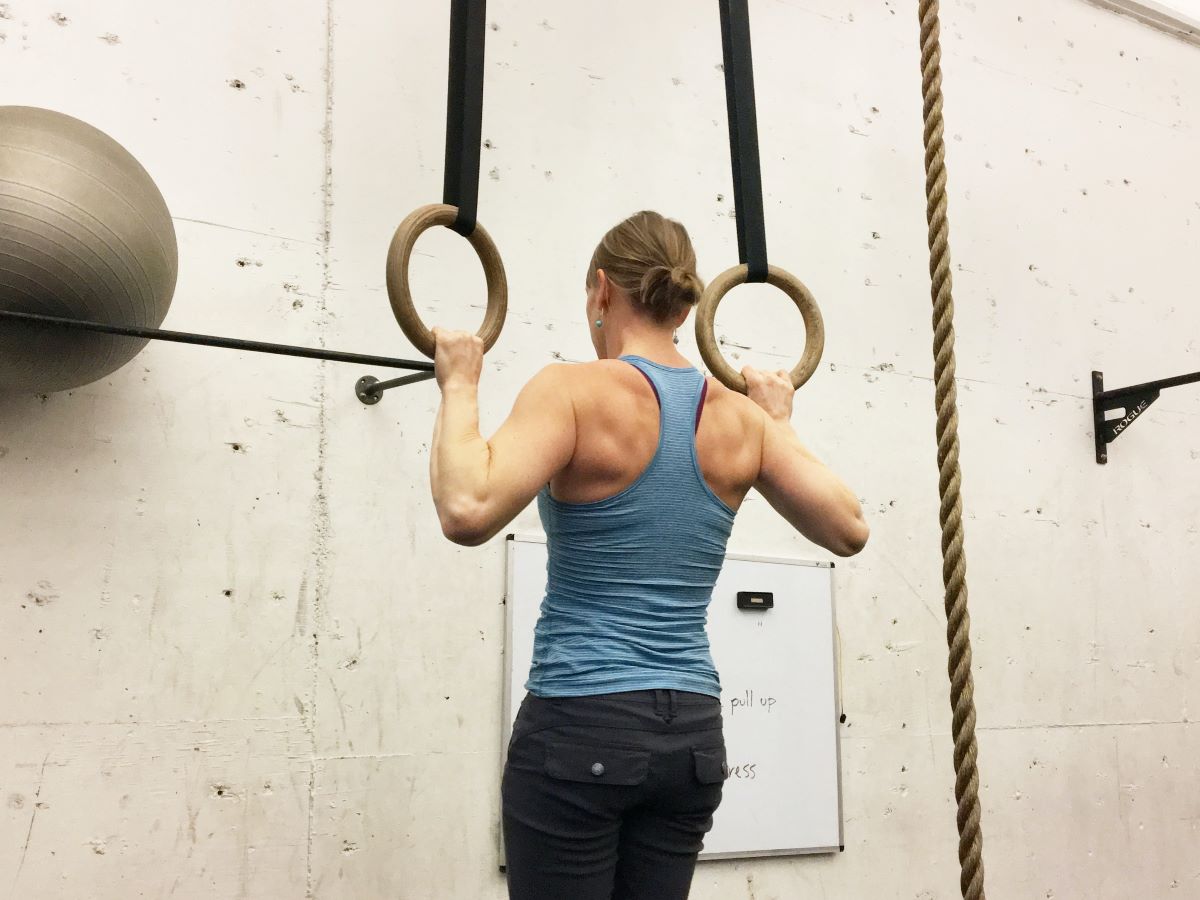Debunking the Myths with Evidence
When it comes to upper body exercises, few movements rival the effectiveness and versatility of the chin-up and pull-up. These compound exercises engage multiple muscle groups in the upper body, including the back, arms, and shoulders. However, a common question arises: Which one is better? In this comprehensive blog post, we will delve into the debate surrounding the chin-up vs pull-up, examining the benefits, debunking the myths, and providing evidence-based insights to determine which exercise reigns supreme.
Understanding the Differences
Before we compare the two exercises, it is crucial to understand their fundamental differences. The primary distinction lies in the grip. In a chin-up, the palms face the body (supinated grip), while in a pull-up, the palms face away (pronated grip). This seemingly subtle variation alters the recruitment of muscles and places different emphases on specific muscle groups.
Muscle Activation
To evaluate the benefits of chin-ups and pull-ups accurately, it is essential to examine the muscle activation patterns involved in these exercises. Numerous studies have investigated the activation of various muscle groups during chin-ups and pull-ups, shedding light on their respective benefits:
- Latissimus Dorsi (Lats): The latissimus dorsi muscles, commonly referred to as the lats, play a significant role in both chin-ups and pull-ups as the primary muscles responsible for the pulling motion. Research indicates that both exercises elicit high levels of lat activation, with no significant difference between the two grips. However, some studies suggest slightly greater lat activation during pull-ups due to the wider grip typically used.
- Biceps Brachii: The biceps brachii, located in the upper arms, are more actively engaged during chin-ups due to the supinated grip. Several studies consistently demonstrate increased biceps activation during chin-ups compared to pull-ups. This heightened biceps involvement makes chin-ups an excellent choice for individuals seeking to specifically target and develop their biceps.
- Brachialis: The brachialis muscle, situated beneath the biceps, experiences greater activation during chin-ups. This muscle contributes to forearm flexion and benefits from the supinated grip utilized in chin-ups. Consequently, chin-ups can provide additional benefits for forearm and overall arm strength.
- Upper Trapezius and Deltoids: The upper trapezius and deltoid muscles are activated to a similar extent in both exercises, irrespective of grip. These muscles play vital roles in shoulder stabilization and are effectively targeted by both chin-ups and pull-ups.
- Other Muscles: In addition to the aforementioned muscles, chin-ups and pull-ups also activate other muscle groups to varying degrees, including the rhomboids, infraspinatus, teres major, and posterior deltoids, all of which contribute to upper body strength and development.
Targeting Weaknesses and Goals
Choosing between chin-ups and pull-ups can depend on individual goals and weaknesses. Consider the following factors when determining which exercise aligns best with your objectives:
Biceps Development
If your primary goal is to build biceps strength and size, chin-ups may be the better choice due to their increased biceps activation. The supinated grip of chin-ups allows for greater emphasis on the biceps, leading to enhanced development in this muscle group.
Grip Strength and Muscular Balance
Pull-ups, with their pronated grip, place greater demand on forearm and grip strength. They can also help achieve a more balanced development of the upper body muscles. The pronated grip engages the forearm muscles more intensely, leading to improved grip strength and overall muscular balance.
Individual Preference and Comfort
Personal preference and comfort should not be overlooked when deciding between chin-ups and pull-ups. Some individuals may simply prefer one exercise over the other due to comfort, biomechanics, or personal enjoyment. It is essential to choose an exercise that feels natural and allows for proper form and execution.
Variations and Progressions
One advantage of both chin-ups and pull-ups is the ability to modify and progress these exercises to suit individual needs. By incorporating variations and progressions, you can continually challenge your muscles, break through plateaus, and optimize your training:
Grip Variations: Both chin-ups and pull-ups offer various grip options that alter muscle activation and difficulty. Wide grip variations further target the lats and increase exercise intensity, while narrow grip variations place greater emphasis on the biceps. Mixed grip, where one hand is supinated and the other is pronated, provides a compromise between the two exercises and offers a unique stimulus.
Weighted Exercises: Once bodyweight chin-ups or pull-ups become less challenging, incorporating weighted versions can further enhance strength gains. Adding additional weight through a weighted vest, belt, or dumbbell increases resistance and promotes progressive overload, a key driver of muscle adaptation and growth.
Assisted Versions: For beginners or individuals working on building strength, assisted variations can be beneficial. Resistance bands or an assisted pull-up machine can reduce the amount of body weight lifted, allowing for controlled progression towards unassisted chin-ups and pull-ups.
Conclusion
In the debate of chin-ups vs pull-ups, understanding individual goals, muscle activation patterns, and preferences is key. While chin-ups offer superior biceps activation, pull-ups target grip strength and muscular balance. However, both exercises effectively engage the lats, upper back, and shoulders, promoting overall upper body strength and development.
To maximize the benefits, it is recommended to incorporate both chin-ups and pull-ups into your training routine. By combining these exercises with grip variations, weighted progressions, and assisted versions, you can achieve a well-rounded upper body development and continual strength gains.
Remember, the key to progress and success lies in consistency, proper form, and gradual increases in difficulty over time. Whether you choose chin-ups or pull-ups, or incorporate both, enjoy the journey towards a stronger, more sculpted upper body, and celebrate the remarkable capabilities of your own physicality.
–
FAQ
1. What is a pull-up and a chin-up?
A pull-up is an upper-body exercise that requires you to pull your body up towards a pull-up bar with palms facing away from each other. A chin-up is a similar exercise, but with palms facing towards you.
2. Which muscles are worked during a pull-up or chin-up?
Pull-ups and chin-ups work several muscle groups in your upper body, including your back muscles, biceps, and forearms.
3. What is the main difference between a chin-up and a pull-up?
The main difference between a chin-up and a pull-up is the hand position. During a pull-up, your palms are facing away from you, while during a chin-up, your palms are facing towards you.
4. Which exercise is better for building muscle – chin-ups or pull-ups?
Both chin-ups and pull-ups are effective bodyweight exercises for building upper-body strength. It really depends on personal preference and goals.
5. Does the line of pull differ between chin-ups and pull-ups?
Yes, the line of pull is slightly different for chin-ups and pull-ups. During a chin-up, the line of pull is closer to the center of your body, while during a pull-up, the line of pull is slightly further away.
6. Are wide grip pull-ups better than regular pull-ups or chin-ups?
Wide grip pull-ups are a great variation to regular pull-ups and chin-ups, as they put more emphasis on your upper back muscles. However, they are not necessarily “better” than other variations.
7. Which exercise is more difficult – chin-ups or pull-ups?
It really depends on the individual. Some people find chin-ups more difficult due to the different hand position, while others find pull-ups more difficult as the line of pull is slightly further away from the body.
8. Can pull-ups or chin-ups help you build muscle even if you can’t do many?
Yes, pull ups and chin ups can build muscle even if you are not able to do many. There are a variety of modifications one can make to increase rep volume such as bands or boxes to make training more productive in the early stages of exercise.
If you’re looking for a Victoria Physiotherapy clinic, you can book an appointment with us online here.

